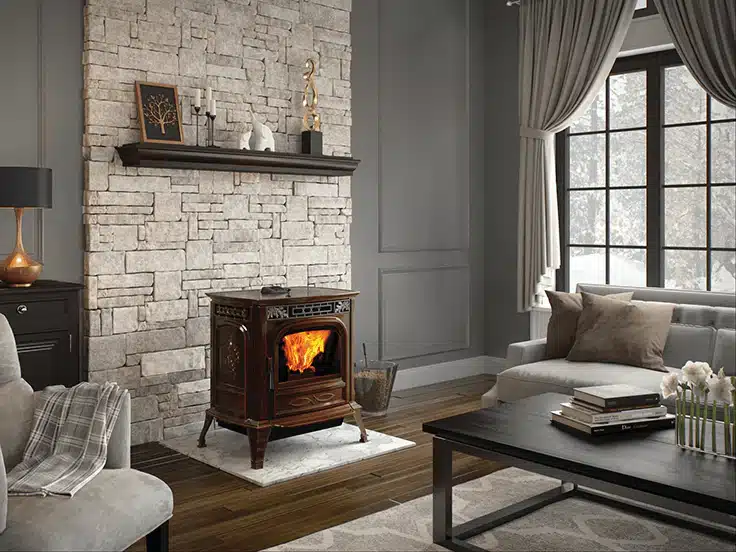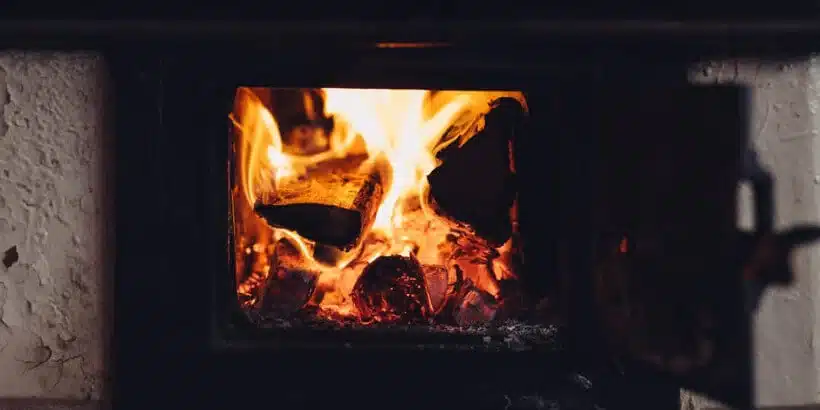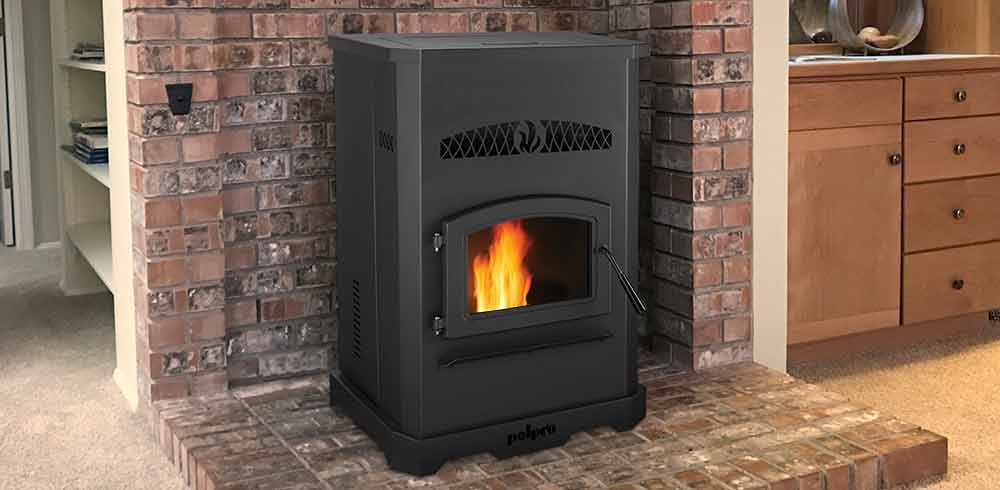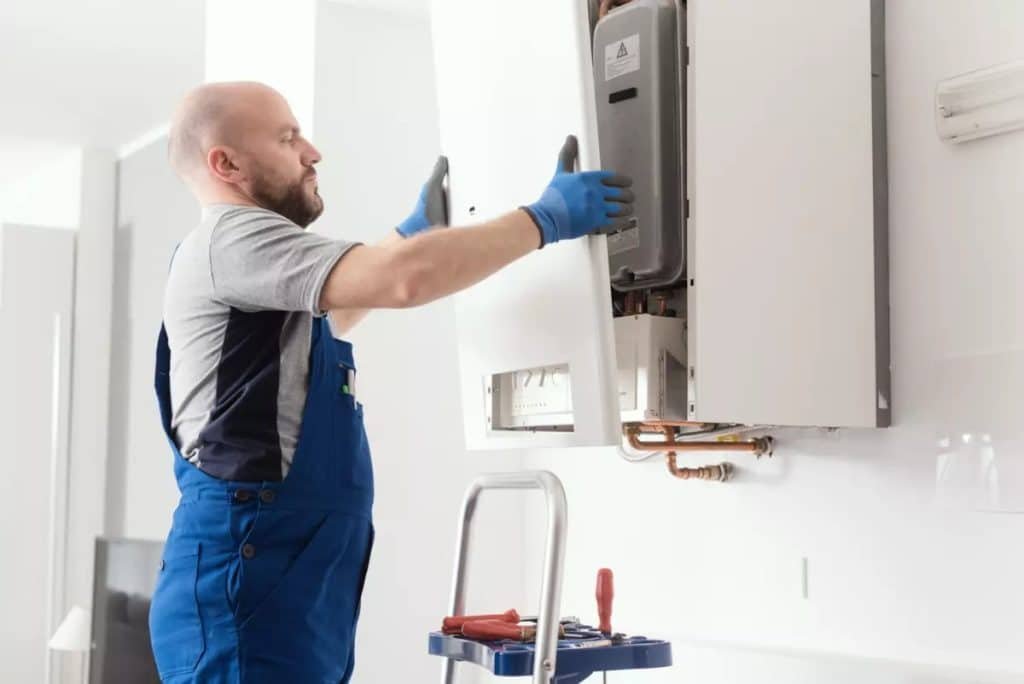Pellet stove have become increasingly popular due to their reputation as a clean, efficient, and environmentally friendly heating option for homes. Whether you are a recent adopter of pellet stoves or contemplating the transition to this cutting-edge heating solution, mastering the effective use of a pellet stove is essential. This comprehensive guide will take you through a detailed, step-by-step journey on how to use a pellet stove, encompassing everything from the initial installation to ongoing maintenance.
To delve even deeper into the world of pellet stoves and access a diverse range of resources, including expert advice and premium products, consider exploring ClimaFast. Whether you are seeking information on installation tips, troubleshooting, or looking for top-notch pellet stoves, ClimaFast provides a wealth of knowledge and quality products to meet your heating needs. Elevate your understanding of pellet stove usage and discover a reliable partner in ClimaFast for all your heating solutions.
For additional resources and a wide range of pellet stoves, consider visiting ClimaFast for expert advice and high-quality products.
Understanding Pellet Stoves:
Embarking on the journey of using pellet stoves involves a fundamental understanding of the key components and principles that drive their operation. By familiarizing yourself with the basic elements, you’ll be better equipped to maximize the efficiency and longevity of your pellet stove.
Pellet Stove Components:
- Hopper: Acting as the storage reservoir for wood pellets, the hopper plays a pivotal role in the continuous operation of the pellet stove. Typically located at the top of the stove, it ensures a steady supply of pellets to fuel the combustion process.
- Auger: Serving as the conveyor system, the auger is responsible for transporting pellets from the hopper to the combustion chamber. This automated mechanism ensures a consistent and controlled pellet feed, optimizing the stove’s performance.
- Combustion Chamber: This is the heart of the pellet stove, where the magic happens. Pellets are introduced into the combustion chamber, where they undergo controlled burning to generate the heat that warms your living space. The efficiency of this process is crucial for effective heating.
- Exhaust System: To maintain indoor air quality and ensure the safe expulsion of combustion byproducts, pellet stoves are equipped with exhaust systems. These systems channel smoke and gases outside, preventing their accumulation within the living space.
Types of Pellets:
Understanding the significance of using high-quality pellets is paramount for the optimal functioning of your pellet stove. High-quality pellets not only enhance efficiency but also contribute to the longevity of the stove and reduce maintenance requirements.
There are different types of pellets available, with hardwood and softwood pellets being the most common. Hardwood pellets, derived from deciduous trees, generally burn hotter and longer. On the other hand, softwood pellets, sourced from coniferous trees, ignite more quickly and produce a consistent flame.
Choosing the right type of pellet for your stove depends on factors such as desired heat output, burn time, and personal preferences. It’s advisable to refer to your stove’s manual for pellet recommendations to ensure peak performance and longevity. In the world of pellet stoves, the fuel you choose can significantly impact your heating experience.
Installation and Setup:
A properly installed pellet stove is key to its efficient operation. Follow these steps for a successful installation:
Selecting the Right Location:
- Consider safety regulations and proximity to combustible materials.
- Ensure proper ventilation and clearances.
Ventilation Installation:
- Explain the types of venting systems – direct vent and vent-free.
- Provide guidelines on installing and maintaining vents.
Connecting to Power:
- Detail the electrical requirements for pellet stoves.
- Highlight the importance of dedicated circuits.
Operating Your Pellet Stove:
Now that your pellet stove is installed, let’s explore the steps to operate it effectively:
Pre-Startup Checks:
- Inspect the hopper for pellet levels.
- Ensure proper venting and exhaust.
Ignition Process:
- Explain the ignition mechanisms – automatic and manual.
- Provide step-by-step instructions for lighting the stove.
Adjusting Temperature and Airflow:
- Discuss the thermostat settings for optimal heating.
- Explain how to control the airflow to regulate combustion.
Maintenance Tips for Longevity:
Regular maintenance is crucial for keeping your pellet stove in top condition. Share these maintenance tips:
Cleaning the Burn Pot and Ash Pan:
- Provide a detailed guide on cleaning ash buildup.
- Emphasize the importance of regular maintenance to prevent clogs.
Inspecting and Cleaning the Venting System:
- Explain the need for inspecting and cleaning the venting system.
- Offer a schedule for maintenance tasks.
Checking Seals and Gaskets:
- Emphasize the role of seals in preventing air leaks.
- Provide guidance on inspecting and replacing worn-out seals.
Troubleshooting Common Issues of Pellet Stove:
Even with proper maintenance, pellet stoves may encounter issues. Address common problems and their solutions:
Pellet Feed Problems:
- Discuss potential causes such as hopper blockages and auger issues.
- Provide troubleshooting steps.
Inadequate Heating:
- Explore reasons for insufficient heat output.
- Suggest solutions, including checking pellet quality and adjusting settings.
Environmental Benefits of Pellet Stove:
Pellet stoves are renowned for their environmental friendliness, offering several advantages over traditional heating methods. Understanding these benefits can further enhance your appreciation for this sustainable heating solution.
Renewable Energy Source:
- Wood pellets, the primary fuel for pellet stoves, are made from recycled wood waste, making them a renewable energy source.
- The use of wood pellets helps reduce reliance on non-renewable fossil fuels, contributing to a more sustainable energy landscape.
Low Emissions:
- Pellet stoves produce lower emissions compared to traditional wood-burning stoves, minimizing air pollutants and promoting better indoor air quality.
- Advanced combustion technology in pellet stoves ensures efficient burning, reducing the release of harmful pollutants into the atmosphere.
Carbon Neutral:
- The carbon footprint of wood pellets is considered neutral since the carbon dioxide released during combustion is roughly equal to the amount absorbed by the trees during their growth.
- This carbon-neutral cycle makes pellet stoves an environmentally responsible choice.
Reduced Deforestation Impact:
- Wood pellets are often manufactured from wood by-products, reducing the demand for new timber and mitigating the impact on forests.
- By utilizing waste wood, pellet stoves contribute to sustainable forestry practices.
The Future of Pellet Stove Technology:
As technology advances, the future of pellet stoves holds exciting possibilities, further enhancing their efficiency and user experience.
Smart Integration:
- Integration with smart home systems is becoming more prevalent, allowing users to control pellet stoves remotely through smartphones or voice commands.
- Smart technology can optimize heating schedules, monitor fuel levels, and provide real-time performance data for improved efficiency.
Energy Efficiency Improvements:
- Ongoing research and development aim to enhance the energy efficiency of pellet stoves, ensuring they provide more heat with fewer pellets.
- Innovations in combustion technology and heat exchangers contribute to increased efficiency and reduced fuel consumption.
Emission Reduction Technologies:
- Continued efforts focus on developing technologies that further reduce emissions from pellet stoves, making them even cleaner and more environmentally friendly.
- Integration of catalytic converters and advanced filtration systems helps minimize particulate matter and pollutants.
Improved Aesthetics and Design:
- Pellet stove manufacturers are investing in aesthetics and design, offering a variety of styles and finishes to complement different home décors.
- Sleeker and more modern designs make pellet stoves an attractive and functional addition to contemporary living spaces.
Conclusion:
Using a pellet stove efficiently involves a combination of proper installation, regular maintenance, and understanding its operational aspects. By following the comprehensive guide provided, you’ll not only ensure optimal performance but also contribute to a greener and more sustainable heating solution. For a wide selection of high-quality pellet stoves and expert advice, visit ClimaFast. Stay warm and environmentally conscious with your pellet stove!
if you want to read more article then visit here




